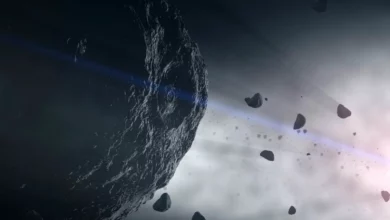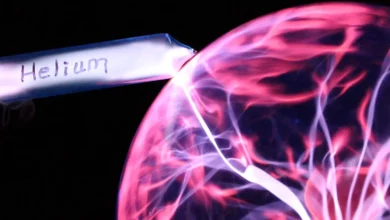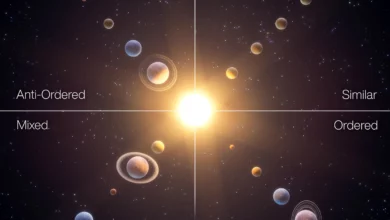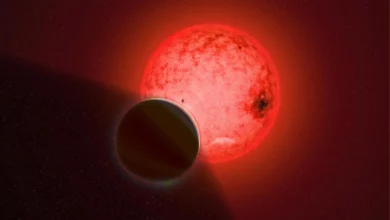Latest Articles
-
Mar- 2023 -2 MarchAsteroid

Planetary Defense Success! NASA’s DART Data Validates Asteroid Kinetic Impact Method
Lead Image: Asteroids have the potential to collide with the Earth and cause catastrophic damage. While most asteroids burn up in the atmosphere before they reach the surface, larger asteroids can cause significant damage and even mass extinction events. NASA’s DART mission showed that kinetic impact can be effective at altering the trajectory of an asteroid, representing a major planetary defense milestone. Credit: NASA Since NASA’s Double Asteroid Redirection Test (DART) successfully impacted its target nearly five months ago, on September 26 — altering the orbit of the asteroid moonlet Dimorphos by 33 minutes — the DART team has been…
Read More » -
1 MarchGeology

New Way To Pinpoint Hidden Helium Gas Fields – And Prevent a Global Supply Crisis
Lead Image: Helium is a gas vital for MRI scanners and high-tech industry – which is suffering from severe supply issues. Now research has identified a new concept in helium gas field formation that will help secure this rare gas for society. Here a tube of helium is seen glowing in the presence of a plasma ball. Credit: Oliver Warr – University of Ottawa; AEL AMS Laboratory Helium – essential for many medical and industrial processes – is in critically short supply worldwide. Production is also associated with significant carbon emissions, contributing to climate change. This study provides a…
Read More » -
1 MarchAstronomy

Astronomers Show There Are Four Classes of Planetary Systems
Astronomers have long been aware that planetary systems are not necessarily structured like our solar system. Researchers from the Universities of Bern and Geneva, as well as from the National Centre of Competence in Research PlanetS, have now shown for the first time that there are in fact four types of planetary systems. In our solar system, everything seems to be in order: The smaller rocky planets, such as Venus, Earth, or Mars, orbit relatively close to our star. The large gas and ice giants, such as Jupiter, Saturn or Neptune, on the other hand, move in wide orbits around…
Read More » -
Feb- 2023 -26 FebruaryAstronomy

Astronomers Discover Bizarre “Forbidden” Planet That Should Not Exist
Lead Image: Artist’s conception of a large gas giant planet orbiting a small red dwarf star called TOI-5205. Credit: Image by Katherine Cain, courtesy of the Carnegie Institution for Science “Forbidden” Planet Orbiting Small Star Challenges Gas Giant Formation Theories Based on our current understanding of planet formation, TOI-5205b should not exist; it is a “forbidden” planet. A team of astronomers has discovered an unusual planetary system in which a large gas giant planet orbits a small red dwarf star called TOI-5205. Their findings challenge long-held ideas about planet formation. Led by Shubham Kanodia from the Carnegie Institution for Science,…
Read More » -
24 FebruaryBiomedical Engineering

Why Do We Remember Emotional Events Better? Columbia Neuroscientists Identify Specific Neural Mechanism Responsible
Lead Image: People tend to remember emotional events more vividly and for longer periods of time compared to neutral events. This is why people often remember significant emotional events, such as a wedding or a traumatic experience, for many years. This heightened memory recall for emotional events can be both a blessing and a curse, as it can bring back powerful memories and emotions, but also lead to the persistence of traumatic memories. Neuroscientists at Columbia Engineering have discovered a specific neural mechanism in the human brain that tags information with emotional associations for enhanced memory. Many individuals recall emotional…
Read More »










